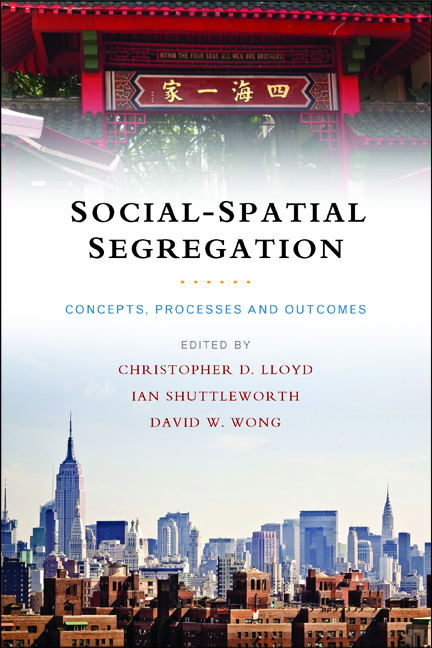seventeen - Conclusion: possible future agendas and summary thoughts
Published online by Cambridge University Press: 04 March 2022
Summary
Introduction
The lesson that segregation matters is continually reinforced by events in the real world, including the recent Swedish riots in May 2013 and the English riots in August 2011. In each case, the root causes of the trouble were initially attributed to segregation and its close relative, social inequality. To a large extent, therefore, this book and the importance of its subject matter speak for themselves. The purpose of this concluding chapter is thus not to look backward and to elaborate on each chapter, but instead to look forward by drawing together the various contributions and by distilling their key points to suggest a broad research agenda on the theme of segregation. Although taking this type of overview is problematic (for instance, others may have very different visions), our aim is to stimulate debate about some future directions for further work. There are four broad avenues that occur from our reading of the book; these are measuring and capturing segregation, understanding processes, making comparisons and understanding outcomes. Although the emphasis is on measurement or methodological issues, the four broad avenues together pose challenges and opportunities for segregation researchers, and we argue that this book is well placed to begin such a stock-taking exercise as it brings together international contributions dealing with segregation in countries including Sweden, the UK and the US, draws on a range of different types of data, as well as different methodologies. These agendas for the future build on the themes that have been the focus for the book, and the interrelated trinity of concepts, data and methods are of key importance in understanding research to date, and how it may develop in the future.
Measuring and capturing segregation
There have been considerable advances in the past decade in how segregation is measured that have taken the field beyond the status quo of traditional census-based analyses of segregation. Historically, these have used population counts aggregated for fixed spatial output units that have been provided by national statistical bodies. In the UK context, for example, typical units that have often been used have been wards and in the US, tracts or block groups.
- Type
- Chapter
- Information
- Social-Spatial SegregationConcepts, Processes and Outcomes, pp. 413 - 426Publisher: Bristol University PressPrint publication year: 2014

